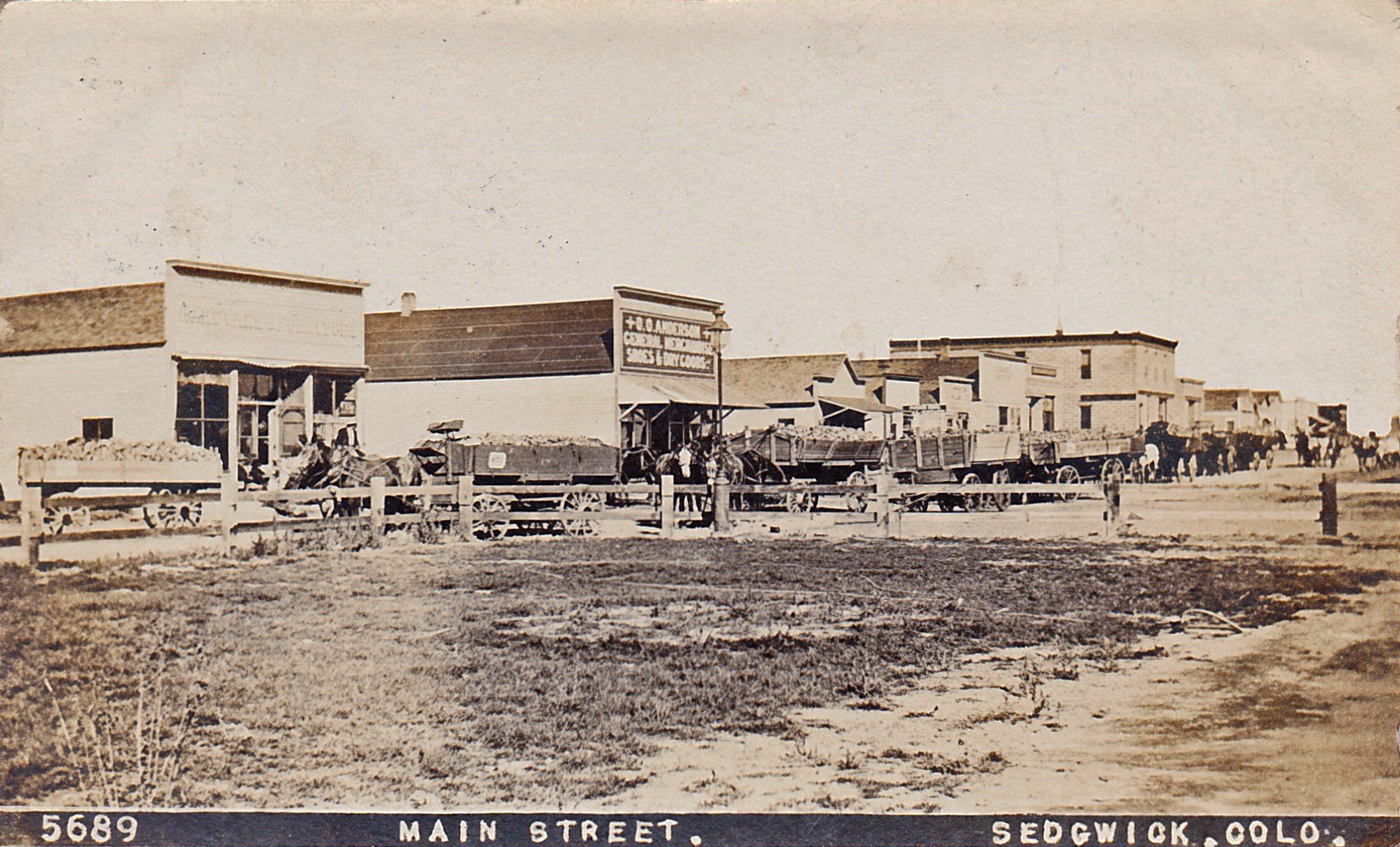In this photo postcard you can see farmers lined up with their wagons full of sugar beets. The farmers are probably waiting to unload their beets into rail cars, which will take their beets to an area sugar beet factory, perhaps the one in Sterling, Brush or Fort Morgan. The apparent abundance of the harvest in 1909 was just a memory in 1910, for “R.H.F.,” the author of this postcard, postmarked August 16, 1910, writes, “This was taken last year. No beets this year, or anything else.”
To get his beets into the rail car, a farmer would most likely have driven his wagon up a ramp and then stopped on a platform. Once on the platform, the wagon wheels would be locked and a hoist would raise one side of the wagon to dump the beets into a gondola-type rail car. Since sugar factories paid by the pound, most likely the wagon would first be weighed before starting up the ramp. During the dumping process, debris and dirt would fall through a metal grate (called a grizzly) into a hopper. After the wagon had emptied its load and come down the ramp on the other side, the contents of the hopper would be loaded back into the wagon, and the wagon would then be weighed again. The remainder resulting from subtracting the second weight from the first weight would be the weight for which the farmer was paid.
REFERENCES:
- “ The Johnstown, Colorado, Sugar Beet Facility” at https://fortcollinsimages.wordpress.com/2019/09/09/the-johnstown-colorado-sugar-beet-facility/

